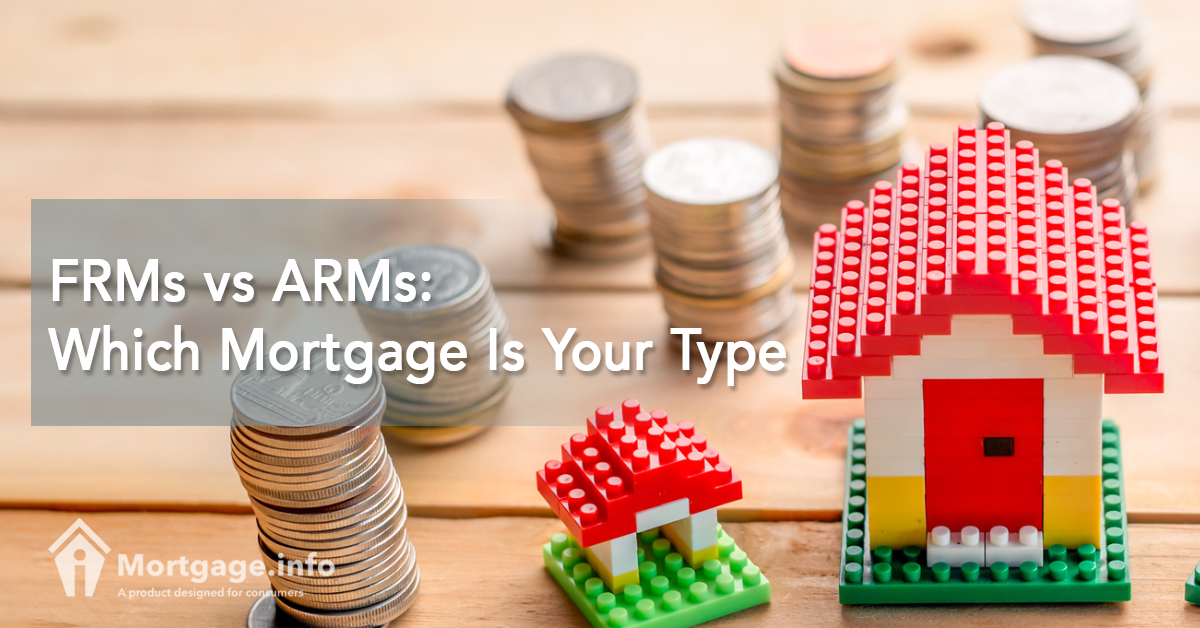Any mortgage discussion is incomplete without a topic on fixed-rate mortgages (FRM) and adjustable-rate mortgages (ARMs). They are the basic types of mortgage loans. A better understanding of the two, their distinctions or similarities, if any, will help you make a better, easier choice for your first home purchase.
Fixed-Rate Mortgages and Stability
One defining feature. If there’s one thing a fixed-rate mortgage offers, it is stability. All throughout the life of the loan, you’ll be paying the same amount of interest and payment. Say, you have a $100,000 mortgage loan with an interest rate of 3.94% and a loan term of 30 years, your monthly payment will be $473.96.
Easy to manage, easy to understand. This “fixedness” makes FRMs easy to manage, financially. And its lack of difficult technical terms makes it easier to understand, too. In fact, a fixed-rate mortgage is practically similar from lender to lender.
Scenarios. Fixed-rate mortgages can be expensive though if taken during a high-rate environment. There are no rate breaks, no introductory rates, and no payment options. To avail of dropping rates, you have to refinance to lower your current rate.
Adjustable-Rate Mortgages and Flexibility
One defining feature. ARMs exist in a variety of forms and options that if you’re financially savvy, you’d be happy with ARM’s flexibility.
Low now, may be low later. Unlike their fixed-rate counterparts, adjustable-rate mortgages have interest rates that adjust throughout the life of the loan. They usually start low, offering an introductory interest rate lower than FRMs’ and fixed for a certain period of time. When this fixed-rate period expires, the interest rate would either go up or down, with payments also rising or falling.
Scenarios. If you plan to stay in the house for a few years, you can take out an ARM and enjoy making low monthly payments. After the fixed-rate period, you can move out and buy a bigger home from the savings you get from the introductory low payments.
This eliminates the exposure to higher rate adjustments. With ARMs, you need not refinance to avail of lower rates as their discounted rates can be really low.
Some Things to Ponder
1. While FRMs can be straightforward as they can get, ARMs have a slew of terminologies and concepts central to understanding how they work. We shall focus on a number of ARM-related terms that you should be aware of:
- Adjustment period. This is how often the interest rate on an ARM changes. The interest rate can adjust monthly, quarterly, annually, every three years, etc. For example, a 1-year ARM has an adjustment period of 1 year wherein the interest rate and payment would change once within a year.
- Interest rate. An ARM interest rate is equal to index + margin. The index refers to any measure of interest rates such as LIBOR, CMT and COFI. The margin is the percentage points that the lender adds. It can be based on your credit. Now, a fully indexed rate (FIR) is the margin plus index. If the loan’s initial rate is lower than the FIR, then it is called a discounted rate.
- Interest Rate Caps. Now, the interest rate has caps that control how much it can go up. There are two types of interest-rate caps: (i) periodic adjustment cap that limits how much the rate could go up or down from one adjustment period to another, and (ii) lifetime cap that limits how much the rate could go up throughout the life of the loan. All ARMs have this lifetime cap.
- Payment Caps. They limit how far your payment can go up during each adjustment. Say, your payment cap is 5%. That means your payment after the adjustment will only be 5% higher than your previous payment, regardless of a higher interest rate. The interest payment that’s not been included in the adjusted payment will be added to your loan balance. This can result in negative amortization, or when you owe more than you borrowed on your loan.
2. Given the variability and volatility of ARMs, consider if you are up for significant rate increases in the future and can handle the huge payments that accompany high rates, even with the caps.
When an ARM interest rate increases, your monthly payments go up along with it. In the worst case scenario, your mortgage could cost more as your rate continues to rise. In contrast, an FRM may start out more costly but in the long run, its stable rate makes it more cost-effective.

